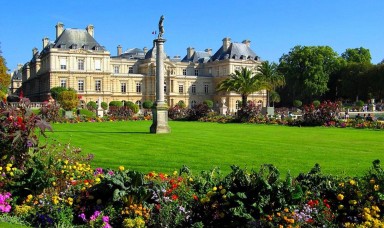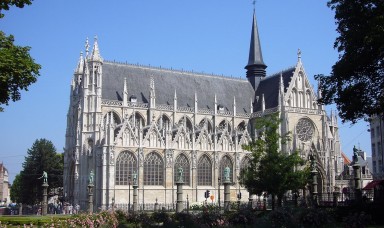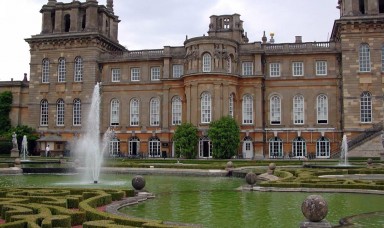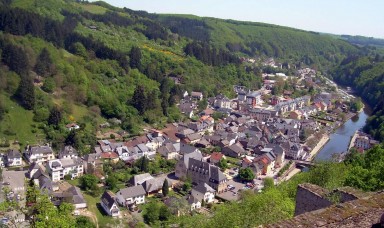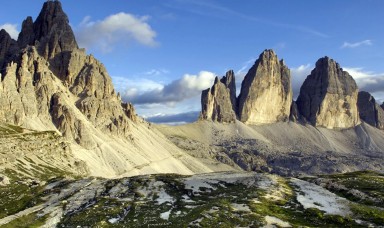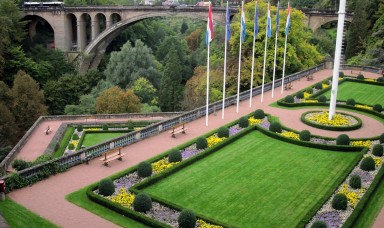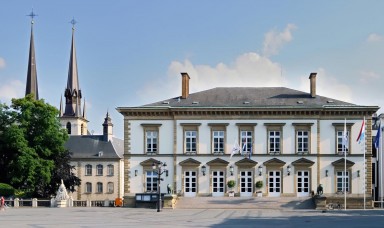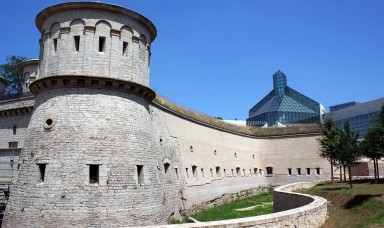 Luxembourg
Luxembourg
Luxembourg, officially the Grand Duchy of Luxembourg (Luxembourgish: Groussherzogtum Lëtzebuerg, French: Grand-Duché de Luxembourg, German: Großherzogtum Luxemburg), is a landlocked country in Western Europe. It is bordered by Belgium to the west and north, Germany to the east, and France to the south. It comprises two principal regions: the Oesling in the north as part of the Ardennes massif, and the Gutland (“good country”) in the south. Luxembourg has a population of 524,853 (as of October 2012) and an area of 2,586 square kilometres (998 sq mi), making it one of the smallest sovereign nations in Europe.
- GEOGRAPHICAL DATA
- DEMOGRAPHICS
- ADMINISTRATIVE DIVISIONS
- ECONOMY
- CULTURE
Luxembourg is one of the smallest countries in Europe, and ranked 179th in size of all the 194 independent countries of the world; the country is about 2,586 square kilometres (998 sq mi) in size, and measures 82 km (51 mi) long and 57 km (35 mi) wide. It lies between latitudes 49° and 51° N, and longitudes 5° and 7° E.
To the east, Luxembourg borders the German Bundesländer of Rhineland-Palatinate and Saarland, and, to the south, it borders the French région of Lorraine. The Grand Duchy borders the Belgian Walloon Region, in particular the latter’s provinces of Luxembourg and Liège, part of which comprises the German-speaking Community of Belgium, to the west and to the north respectively.
The northern third of the country is known as the ‘Oesling’, and forms part of the Ardennes. It is dominated by hills and low mountains, including the Kneiff near Wilwerdange, which is the highest point, at 560 metres (1,837 ft). Other mountains are the ‘Buurgplaaz’ at 559 metres near Huldange and the ‘Napoléonsgaard’ at 554 metres near Rambrouch. The region is sparsely populated, with only one town (Wiltz) with a population of more than four thousand people.
The southern two-thirds of the country is called the “Gutland”, and is more densely populated than the Oesling. It is also more diverse, and can be divided into five geographic sub-regions. The Luxembourg plateau, in south-central Luxembourg, is a large, flat, sandstone formation, and the site of the city of Luxembourg. Little Switzerland, in the east of Luxembourg, has craggy terrain and thick forests. The Moselle valley is the lowest-lying region, running along the southeastern border. The Red Lands, in the far south and southwest, are Luxembourg’s industrial heartland and home to many of Luxembourg’s largest towns.
The border between Luxembourg and Germany is formed by three rivers: the Moselle, the Sauer, and the Our. Other major rivers are the Alzette, the Attert, the Clerve, and the Wiltz. The valleys of the mid-Sauer and Attert form the border between the Gutland and the Oesling.
According to the 2012 Environmental Performance Index, Luxembourg is one of the world’s best performers in environmental protection, ranking 4th out of 132 assessed countries.
The people of Luxembourg are called Luxembourgers. The immigrant population increased in the 20th century due to the arrival of immigrants from Belgium, France, Italy, Germany, and Portugal, with the majority coming from the latter: in the 2001 census, there were 58,657 inhabitants with Portuguese nationality.
Since the beginning of the Yugoslav wars, Luxembourg has seen many immigrants from Bosnia and Herzegovina, Montenegro, and Serbia. Annually, over 10,000 new immigrants arrive in Luxembourg, mostly from the EU states, as well as Eastern Europe. As of 2000, there were 162,000 immigrants in Luxembourg, accounting for 37% of the total population. There were an estimated 5,000 undocumented migrants in Luxembourg as of 1999.
Luxembourg is divided into 3 districts, which are further divided into 12 cantons and then 106 communes. Twelve of the communes have city status, of which the city of Luxembourg is the largest.
The districts are Diekirch, Grevenmacher, and Luxembourg.
Luxembourg’s stable and high-income market economy features moderate growth, low inflation, and a high level of innovation. Unemployment is traditionally low, although it had risen to 6.1% by May 2012, due largely to the effect of the 2008 global financial crisis. Consequently, Luxembourg’s economy is forecast to have negligible growth in 2012. In 2011, according to the IMF, Luxembourg was the second richest country in the world, with a per capita GDP on a purchasing-power parity (PPP) basis of $80,119. Luxembourg is ranked 13th in the Heritage Foundation’s Index of Economic Freedom, 24th in the United Nations Human Development Index, and 4th in the Economist Intelligence Unit’s quality of life index.
The industrial sector, which was dominated by steel until the 1960s, has since diversified to include chemicals, rubber, and other products. During the past decades, growth in the financial sector has more than compensated for the decline in steel production. Services, especially banking and finance, account for the majority of economic output. Luxembourg is the world’s second largest investment fund centre (after the United States), the most important private banking centre in the eurozone and Europe’s leading centre for reinsurance companies. Moreover, the Luxembourg government has aimed to attract internet start-ups, with Skype and Amazon being two of the many internet companies that have shifted their regional headquarters to Luxembourg.
In April 2009, concern about Luxembourg’s banking secrecy laws, as well as its reputation as a tax haven, led to its being added to a “grey list” of nations with questionable banking arrangements by the G20. In response, the country soon after adopted OECD standards on exchange of information and was subsequently added into the category of “jurisdictions that have substantially implemented the internationally agreed tax standard”. In March 2010, the Sunday Telegraph reported that most of Kim Jong-Il’s $4bn in secret accounts is in Luxembourg banks. Amazon.co.uk also benefits from Luxembourg tax loopholes by channeling substantial UK revenues as reported by The Guardian in April 2012. Luxembourg ranked third on the Tax Justice Network’s 2011 Financial Secrecy Index of the world’s major tax havens, scoring only slightly behind the Cayman Islands.
Agriculture is based on small, family-owned farms.
Luxembourg has especially close trade and financial ties to Belgium and the Netherlands (see Benelux), and as a member of the EU it enjoys the advantages of the open European market.
With $147 billion (April 2013), the country ranks eleventh in the world in holdings of U.S. Treasury securities. The ranking is however imperfect as some foreign owners entrust the safekeeping of their securities to institutions that are neither in the United States nor in the owner’s country of residence.
Luxembourg has been overshadowed by the culture of its neighbours, although, having been for much of its history a profoundly rural country, it retains a number of folk traditions. There are several notable museums, mostly located in the capital; these include the National Museum of History and Art (MNHA), the Luxembourg City History Museum, and the new Grand Duke Jean Museum of Modern Art (Mudam). The National Museum of Military History (MNHM) in Diekirch is especially known for its representations of the Battle of the Bulge. The city of Luxembourg itself is on the UNESCO World Heritage List, on account of the historical importance of its fortifications.
The country has produced some internationally known artists, including the painters Théo Kerg, Joseph Kutter and Michel Majerus, as well as the photographer Edward Steichen. Steichen’s The Family of Man exhibition is now permanently housed in Clervaux, and it has been placed on UNESCO’s Memory of the World register. Movie star Loretta Young was of Luxembourgish descent.
Luxembourg was the first city to be named European Capital of Culture twice. The first time was in 1995. In 2007, the European Capital of Culture was to be a cross-border area consisting of the Grand Duchy of Luxembourg, the Rheinland-Pfalz and Saarland in Germany, the Walloon Region and the German-speaking part of Belgium, and the Lorraine area in France. The event was an attempt to promote mobility and the exchange of ideas, crossing borders in all areas, physical, psychological, artistic and emotional.
Luxembourg was represented at the World Expo 2010 in Shanghai, China from 1 May to 31 October 2010 with its own pavilion. The pavilion was based on the transliteration of the word Luxembourg into Chinese, “Lu Sen Bao”, which means “Forest and Fortress”. It represented Luxembourg as the “Green Heart in Europe”.

